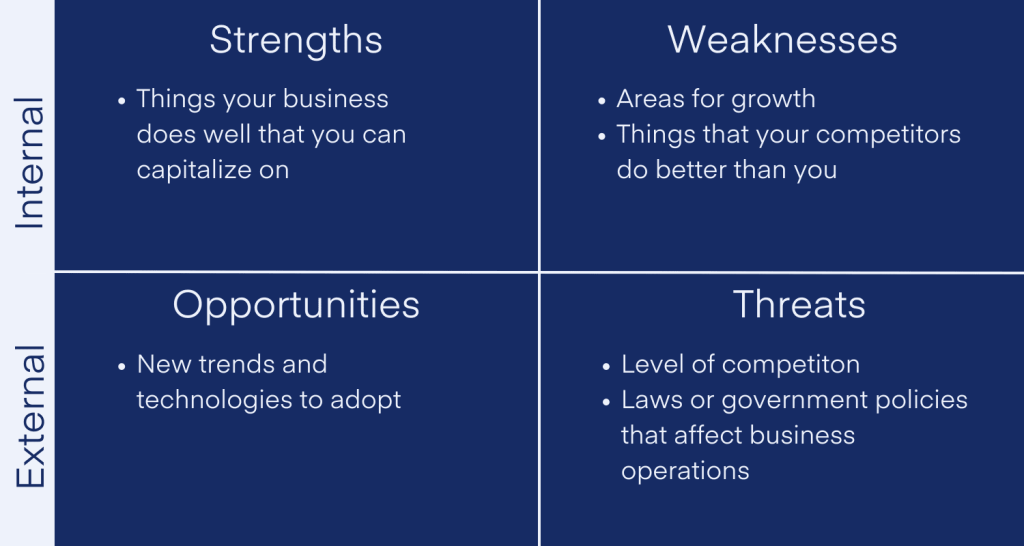Many people think an ecommerce marketing plan is only for ‘big businesses’. Sure, a massive corporation needs one, but a small business — such as an ecommerce store — can also benefit from a marketing plan.
An ecommerce marketing plan is a simple document that gives you a structured approach to meeting your business goals. It should be specific to your ecommerce store.
Because every ecommerce store is different, no marketing plan should be the same. That said, there’s no ‘right’ way of constructing your marketing plan. To put you on the right track, here are six things worth including in an ecommerce marketing plan.
1. Executive summary
This is just a short, simple summary of the marketing plan.
List the most important things, like your goals and recommendations for achieving them. This is particularly important if more than one person contributes to running the online store — whether providing you with products to sell or running the site — simply because it provides others with a basic idea of your vision.
An executive summary is also useful if your ecommerce marketing plan is comprehensive and lengthy. In that case, follow up the executive summary with a contents page.
If you get stuck, look at this article from the Houston Chronicle on how to write an executive summary of a marketing plan.
2. Current marketing situation
This tells you where your company lies within the current target market. Make sure you address the following things:
- Who is your target market? Don’t just say “online shoppers!” Segment your target consumers, then define their needs and wants and consider their purchasing behavior.
- What are you selling? Review your products in terms of sales, prices, and gross margins.
- Who are your competitors? Consider their market positions and strategies for product quality, pricing, promotion, and distribution. These should also be specific to your store — don’t just say all online stores. Consider other online stores targeting the same customers and selling similar products.
An insight into your current marketing situation will help you develop a more personalized and comprehensive ecommerce marketing plan specific to your target market.
3. SWOT analysis
Analyze the strengths, weaknesses, opportunities, and threats to your ecommerce store. If you want to keep things simple, present this information in a table.

Look at the one above — it might give you an idea about how you could set it up. Identifying the positives will help you point out what could be leveraged to help your business grow while identifying the negatives will help you anticipate factors that could prevent your business from growing.
4. SMART goals
List the goals/objectives you want to achieve in your ecommerce marketing plan.

- Goals need to be Specific. You need to be clear and built around well-defined targets to define success. In other words, determining whether you’ve achieved the goals – ‘I want my business to grow’ is not a specific goal!
- Goals need to be Measurable, otherwise, you can’t track your progress. Of course, there are certain things that are easier to measure than others. For unquantifiable things, you should come up with some kind of scale.
- Goals need to be Attainable. You want an inspiring goal that will push you to do your best, but you need it to be achievable. Finding motivation is hard if achieving the goal seems far from reach.
- Goals need to be Realistic. They need to be relevant to your business and feasible. They need to represent an objective that you’re willing to work towards.
- And finally, goals need to be Timely. Set deadlines and targets for the time you have to reach your goal — it will keep you on track.
Don’t you just love acronyms?
5. Marketing strategy
How will you create value for your customers and, in return, capture value from them to meet your goals/objectives?
Outline product quality, pricing, promotion, and distribution strategies. Also, consider how these will help you achieve your goals and how they respond to the factors outlined in the marketing situation and SWOT analysis.
6. Action plan
How will you bring your ecommerce marketing strategies to life? When? Who will do it? How much will it cost? Consider your budget when constructing the marketing plan.
It’s wise to create a projected profit and loss statement that shows your expected revenues and costs. This will help you define realistic goals and relevant strategies and action plans.
Finally, make sure you stick to your ecommerce marketing plan! Monitor your progress and continuously update the marketing plan. If you meet your goals, make new ones.
If you don’t, take another look at your current marketing situation and your SWOT analysis and further adjust your strategies and action plans — or change your deadlines.
So, start planning!
Overall, following an ecommerce marketing plan will help you keep on top of things as you run your ecommerce store, and it will hopefully prevent you from falling into the trap of trying to tackle too many things at once. That way, you can run a more efficient and effective business. As you create better value for your customers, you’ll increase your online sales too.








